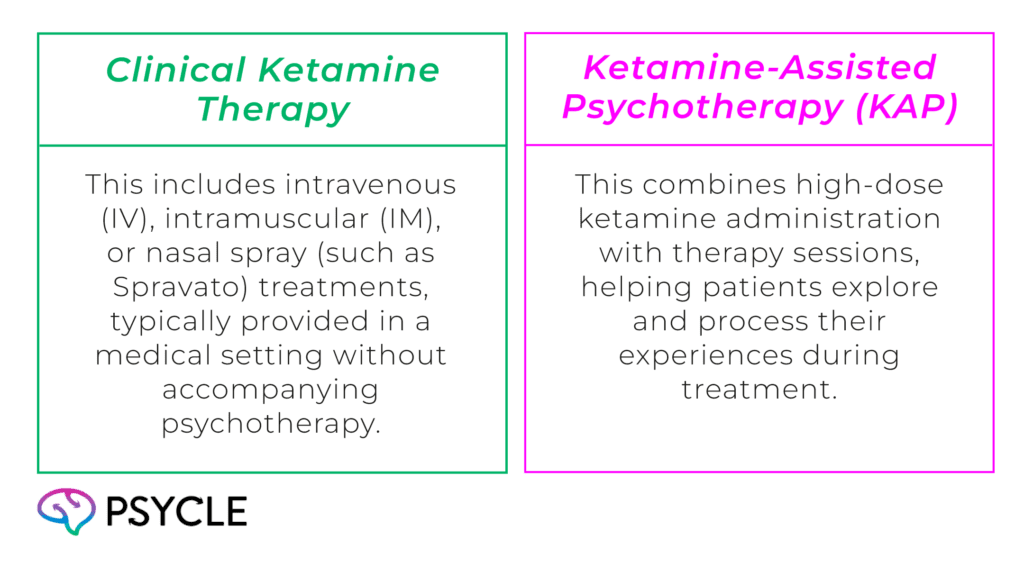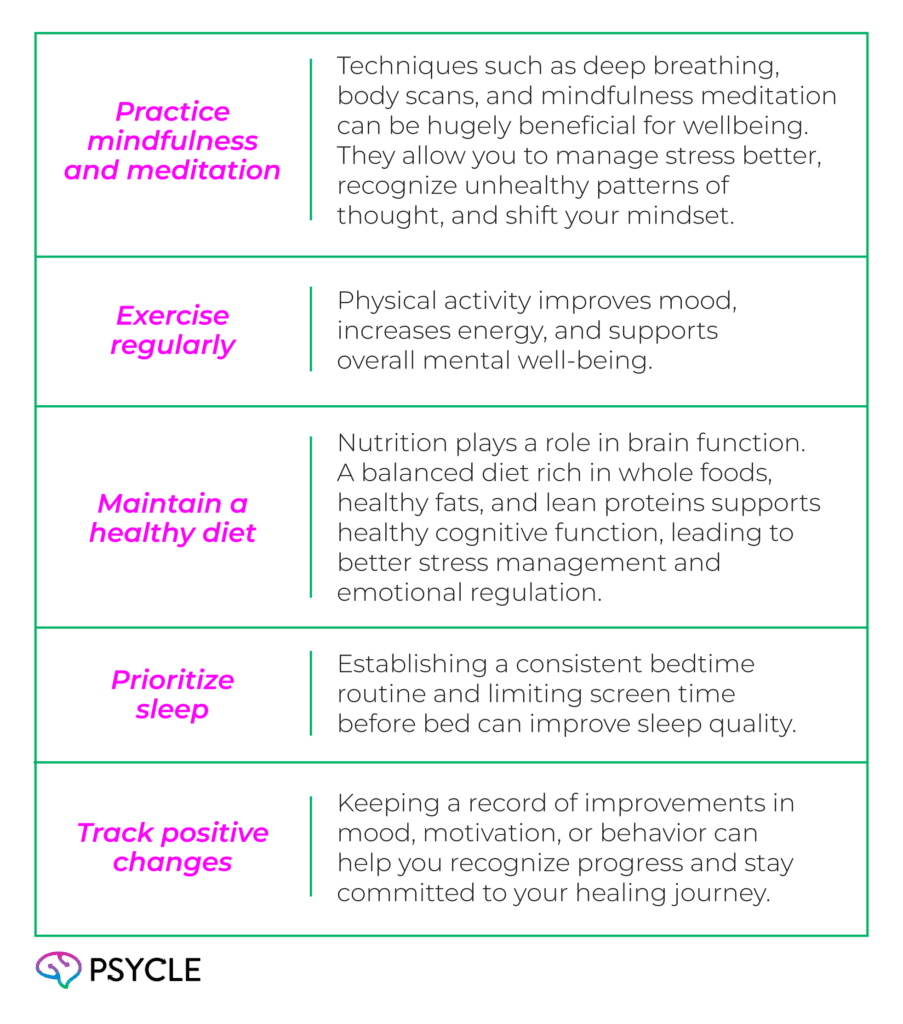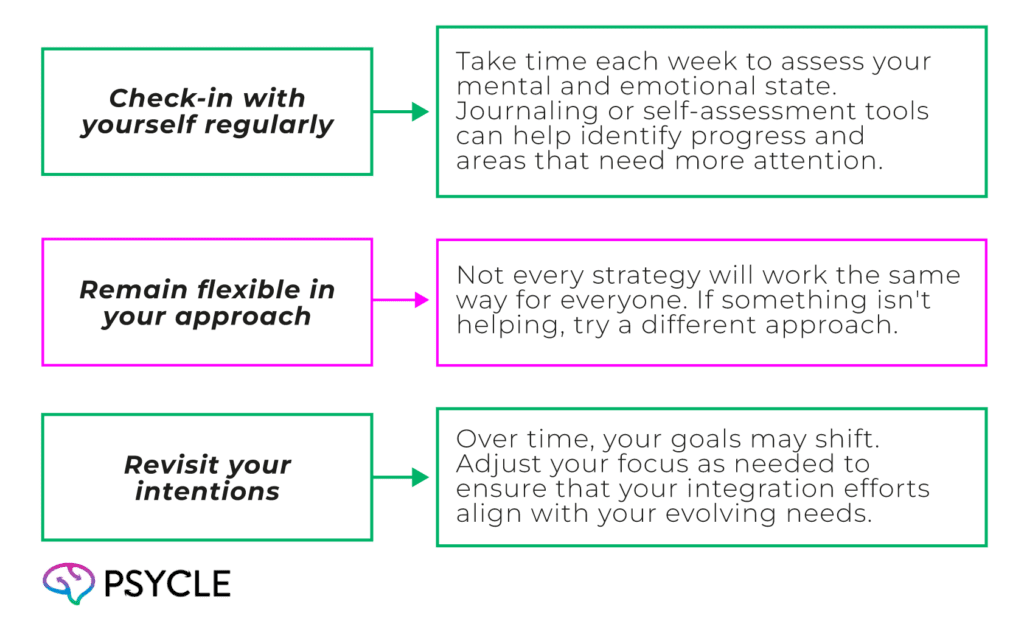Ketamine therapy has emerged as a promising mental health treatment with significant and sustained benefits. However, the long-term effectiveness of ketamine can also depend on how well you integrate the experience into daily life.
Integration helps solidify new thought patterns and behaviors, making positive changes more lasting. It also helps people make sense of experiences that have been confusing or disorientating.
Key Takeaways
- Ketamine preparation and integration involves taking insights from therapy and applying them to daily life.
- Setting clear intentions before and after treatment helps guide your healing process.
- Journaling and self-reflection strengthen understanding and reinforce personal growth.
- Psychotherapy provides structured support for processing and implementing insights.
- Physical and mental well-being practices enhance the benefits of ketamine therapy.
- Connecting with supportive communities offers encouragement and shared experiences.
- Regular self-assessment and flexibility in approach ensure sustained progress.
What is Ketamine Integration?
Ketamine integration refers to the process of incorporating lessons, insights, and emotional shifts from ketamine therapy into your everyday life. Ketamine enhances neuroplasticity, the brain’s ability to form new neural pathways. This mechanism can allow you to more easily change stuck and rigid thought patterns and adopt heathier ways of thinking and lifestyle habits.
There are two main types of ketamine therapy:

Integration is helpful for both types of ketamine therapy but is especially important for KAP. This model typically uses larger doses of ketamine that induce an altered state of consciousness, characterized by dissociation from one’s body and normal sense of reality.
These psychoactive experiences can provide deep personal insight that requires reflection and action. They can also be disorientating and confusing for some, and integration provides a means to help people process such experiences so they don’t have lingering negative effects. Choosing a well-reviewed clinic that provides close emotional support from experts can mitigate the likelihood of negative experiences.
Set Clear Intentions
Setting intentions before and after treatment helps direct your healing process. Intentions give you a framework for making sense of your experiences and applying them to your daily life.
- Define specific goals for your mental health journey. Identify areas where you want to see progress, such as reducing anxiety, improving relationships, or fostering self-acceptance.
- Align your goals with personal values. Consider what matters most to you and how ketamine therapy can support those priorities.
- Discuss your intentions with your provider. They can offer guidance on how to use your sessions to move toward your goals.
Intentions are different from expectations. Instead of expecting a single session to “fix” an issue, focus on gradual progress and meaningful insights.
Reflect on Your Experience
Journaling and self-reflection help you process and retain the insights gained during ketamine therapy. Writing about your experience allows you to track changes in your thoughts and emotions over time.
- Record thoughts, emotions, and sensations from each session. Describe any mental images, realizations, or shifts in perception that stood out to you.
- Reflect on patterns. Over multiple sessions, you may notice recurring themes that provide deeper understanding of your emotions and behaviors.
- Talk to a trusted friend, therapist, or support group. Verbalizing your experience can offer new perspectives and help reinforce positive changes.
Sometimes, it may be difficult to express your feelings in words. If so, you can always try expressing yourself in different ways, such as through art and music. Physical self-expression through dance can also be hugely beneficial for expressing and releasing emotions stored in the body.
Engage in Therapy
Working with a therapist after ketamine therapy can improve the integration process. Therapy provides a structured space to explore what came up during your sessions and how to apply these insights to real life.
- Psychotherapy helps process emotions and experiences that arise during ketamine treatment. Some insights may be difficult to face alone, and professional guidance can offer clarity. You may also have insights about past traumas during ketamine, and psychotherapists can help you understand and overcome the effects of this trauma.
- Specialized integration therapists and coaches have experience working with ketamine patients. They can help translate psychedelic insights into actionable steps and make the most of your ketamine journey. They can also help you process any confusing experiences or persisting negative feelings.
- Cognitive behavioral therapy (CBT) is a type of therapy that helps people change how they think and behave. This therapy can prevent old patterns from resurfacing and reinforce new perspectives and coping strategies.
Looking After Your Mental and Physical Well-Being
Ketamine’s effects on neuroplasticity create a prime opportunity to adopt healthier habits. The post-treatment window is an ideal time to implement lifestyle changes that support mental health.

Connect with Supportive Communities
Sharing your experiences with others who have undergone ketamine therapy can provide valuable support and perspective. Many people find strength and encouragement in community settings.
- Join a support group: Many online and in-person groups exist for individuals integrating psychedelic therapies. These groups provide a safe space to discuss experiences and exchange insights.
- Engage in meaningful conversations: Talking with trusted friends or family members who are open to discussing your experience can help you process your journey.
- Explore integration workshops: Some therapists and organizations offer workshops specifically focused on ketamine integration, providing additional guidance and tools.
Monitor Progress and Adjust as Needed
Self-reflection and regular assessment allow you to stay on track with your integration process. Integration is not a one-time event but an ongoing journey of personal growth.

Integration is a crucial part of ketamine therapy. By actively engaging in this process, you can maximize the benefits of your treatment and create meaningful, lasting changes in your mental health and overall well-being.

